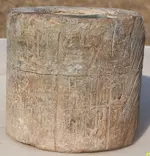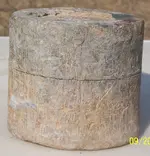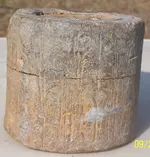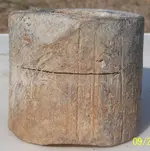Looking for ideas to help us identify an object (pictures attached) my husband found. He seems to think it may be some part/piece of heavy artillery so that's what I've been researching. After spending hours surfing the internet, I found this site and decided to post pics here.
The object in question is cylindrical, weighs approx 16 pounds with a 4 1/8" diameter and "stands" 3 1/8" high/tall. We are guessing that the metal is lead because it is soft/malleable, non-magnetic, and obviously very heavy. There are what look like possible rifling striations all around the sides, and there is an indentation measuring about 1" diameter (or so) in the center of what we believe to be the bottom side. There is also a bluish-gray marking that resembles markings of being sliced/cut on what we're calling the top.
I guess I've tried to describe it as best I can, so I'll just yield to the pictures.
The object in question is cylindrical, weighs approx 16 pounds with a 4 1/8" diameter and "stands" 3 1/8" high/tall. We are guessing that the metal is lead because it is soft/malleable, non-magnetic, and obviously very heavy. There are what look like possible rifling striations all around the sides, and there is an indentation measuring about 1" diameter (or so) in the center of what we believe to be the bottom side. There is also a bluish-gray marking that resembles markings of being sliced/cut on what we're calling the top.
I guess I've tried to describe it as best I can, so I'll just yield to the pictures.



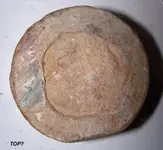
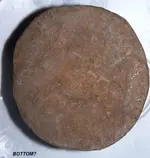


![fig27p52[1].webp](/data/attachments/556/556988-fe4d7b7c0d5a8e456d455083e8f40f2a.jpg?hash=owff0q3xIb)

![A1535C[1].webp](/data/attachments/558/558837-c0dea9de670128b940462f9363aea7d8.jpg?hash=yuML5oOhno)
